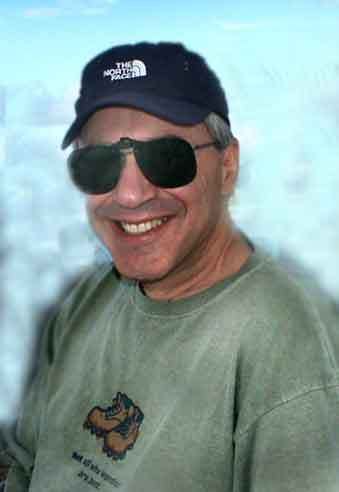Wisdom of Gary Simon...
Gary is one of the founding fathers of our Milwuakee kayaking community. He is an excellent teacher and has a gift for clearly explaining the difficult. With his permission, I am publishing here an e mail he sent to me this morning. (Bold accent are my own)
Paddle safe...
DS
I will try to explain my understanding of the benefit of a more vertical paddle blade, which is based on and related to the concept of slippage.
1. Slippage. As you know, the concept is that the blade remains fixed once it is planted, and the paddler pulls the kayak, ski, etc. to the fixed paddle blade. Stop-action video has proven that, while this is a valid concept, the blade in fact moves back a little towards the paddler (that is, "slips") during the power phase. The less the slippage, the more solid the plant and the more efficient the stroke since all of the power is transmitted to the blade. (Reduction of slippage is the sole reason behind the wing paddle. The airfoil blade creates a lower pressure area on the back of the blade and a high pressure on the face, thus allowing for less slippage. But there is still some slippage, especially if the blade is not vertical; and it is impossible to have a completely vertical blade.)
2. Blade surface area. The more surface area of the blade squared to the water, the less the slippage. One way to visualize this is to think of the difference between a square piece of plywood affixed to a round shaft acting as a blade, and just a round shaft. The square piece would clearly provide for less slippage and a more powerful catch right before and during the power phase. Now, imagine a spotlight shining on the non-power face of the blade and the shadow cast by that light. A perfectly vertical blade of, say 900 sq. inches, would cast a shadow of 900 sq. inches. Now, lean the blade either forward or backward--the shadow the blade now casts is less than 900 sq. inches. So, a more vertical blade will present more area to the water, and should provide for a more solid catch and power phase.
3. The height of the blade varies throughout the recovery through the completion of the catch, when in theory is when the blade is completely buried. I raise my top hand to slightly above my head just before starting the catch, and try to have the top hand somewhere around my chin upon completion of the catch and during the power phase. Pictures can be misleading if one does not try to figure out where the paddler is during his stroke. For example, in the one you posted today of my stroke (last pic), I was somewhere right before or at the start of the catch phase when the top hand was coming down as the blade was inserted into the water during the catch. How high one goes depends on paddle length, paddler size, energy levels, paddle conditions, and various other factors. Does not much matter, but I always try to "think vertical paddle", unless hanging on for dear life. GS
Tuesday, November 22, 2011
Subscribe to:
Post Comments (Atom)









No comments:
Post a Comment